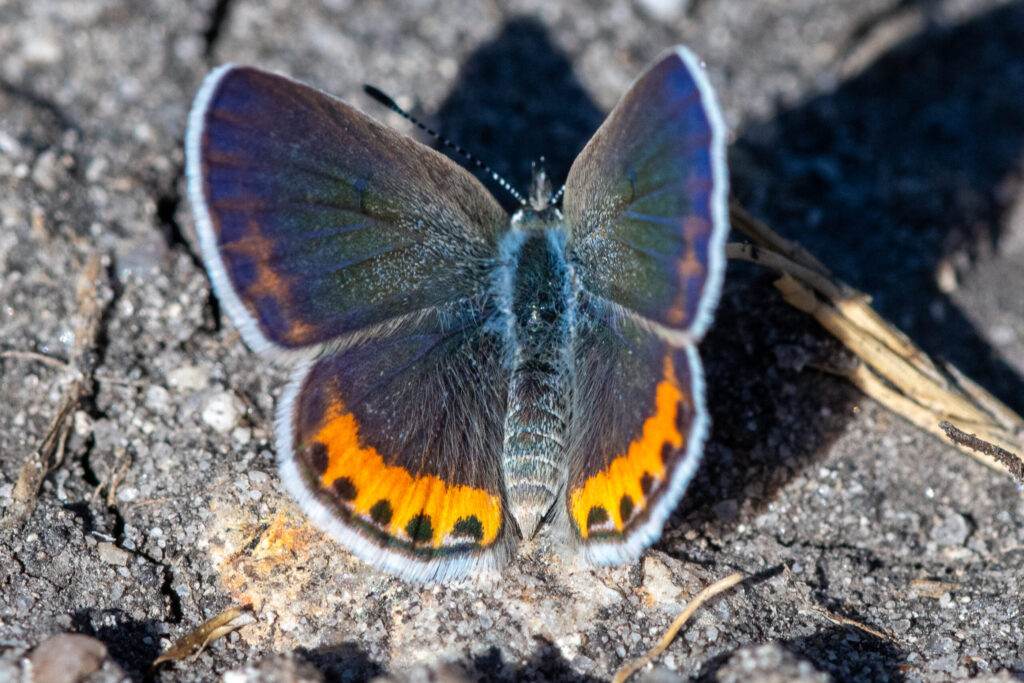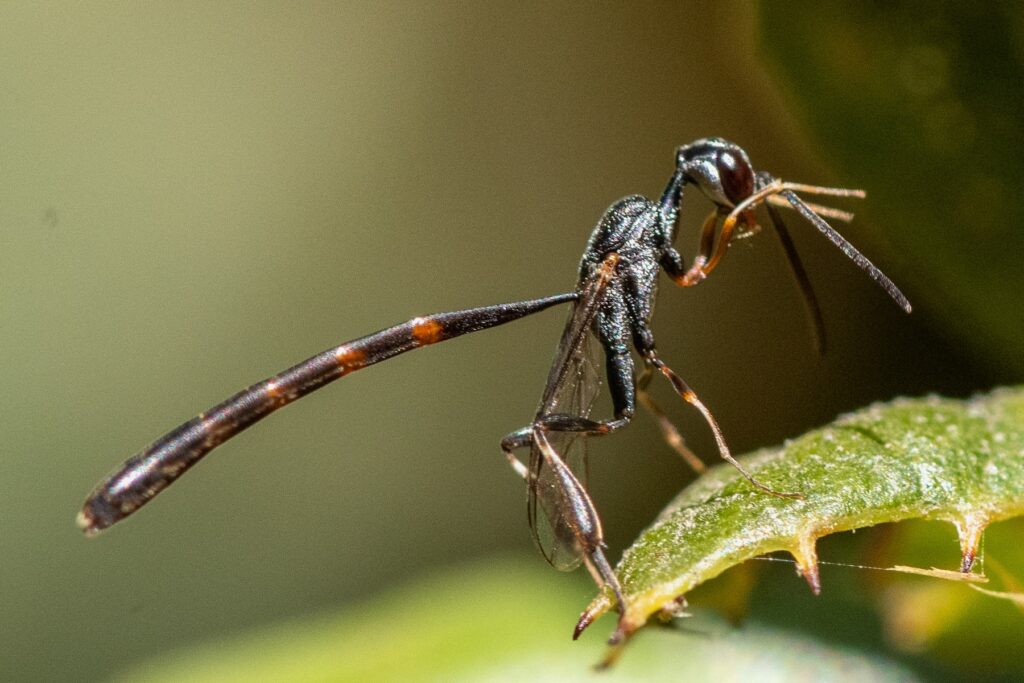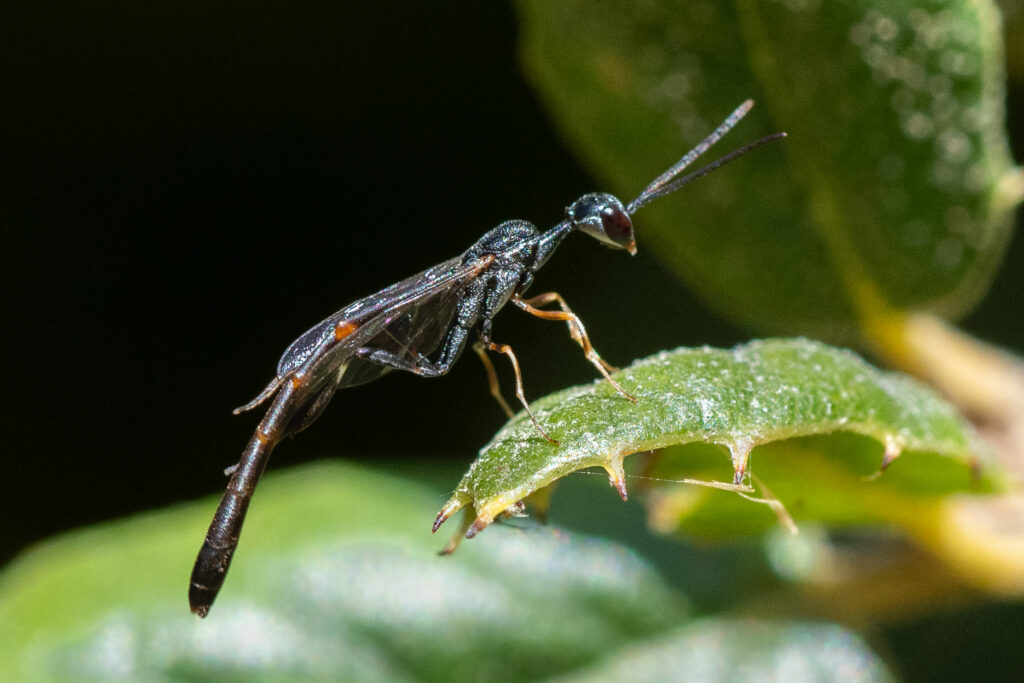When I don’t have time to go for a bird walk, I still like to get outside and look around. For the past few days I’ve been taking out my macro gear to go bug hunting. I haven’t found much, but I did find a couple of cool things.
Over the weekend, I investigated what kinds of wildlife I might find on the various oak trees on the property. I found mostly galls, and a couple of different wasp species, one of which I actually got a couple of decent photos of. It’s a wasp family I’d never encountered before, the gasteruptiidae. Species-level identification from photos is beyond even the phenomenal talents of the folks at bugguide.net, but they were at least able to get me to the right genus. The swollen hind “ankles” (cribbed that description from my Kaufman Field Guide to Insects of North America) are distinctive, as is the long “neck” formed by the propleura (a part of insect anatomy I’d never heard of before, or if I had, hadn’t paid attention to–these are one of the three main bits of chitin that cover the prothorax of wasps).
According to a write-up I found over at North American Insects & Spiders, “wasps in the family Gasteruptiidae are predator-inquilines that lay eggs inside the cells of solitary bees and wasps nesting in plant stems or in underground nests, with the resulting larvae feeding on the food stores and/or nest inhabitants.” (In case you’re curious, as I was, an “inquiline” is a species that lives commensally in the nest, burrow, or dwelling place of an animal of another species. It has to be modified by “predator” in this case, because it’s not a commensal relationship: it’s really a parasitic one, and one in which the host is the meal, not a commensal.)
The other insect I found a couple of days later, and is a bit more readily identifiable to laypeople like me: an Acmon Blue butterfly. It’s one of the widest-ranging butterflies in the west, and it’s one of the more common species around here. Since we haven’t yet started our pollinator plantings, we’re not exactly butterfly-rich on the homestead. With luck, that’ll change over this fall and winter, and next spring and summer will see a lot more activity here.
Stay tuned for that!



